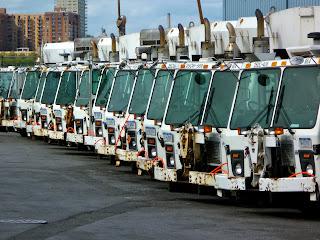Sanitation vehicles are playing a pivotal role in driving the circular economy by closing the loop on waste management. The circular economy aims to minimize waste generation, maximize resource efficiency, and promote the reuse, recycling, and repurposing of materials. Sanitation vehicles contribute to this paradigm shift through their innovative features and practices.
One key aspect is the integration of waste separation and recycling systems into sanitation vehicles. These vehicles are equipped with advanced sorting mechanisms that allow for the efficient separation of recyclable materials from the general waste stream. By collecting and sorting recyclables on-site, sanitation vehicles contribute to the creation of high-quality recycled materials that can be reintroduced into the production cycle. This reduces the reliance on virgin resources, minimizes waste sent to landfills, and promotes the concept of a closed-loop system.
Additionally, Sanitation Vehicles actively participate in the collection of organic waste, such as food scraps and yard trimmings. This organic waste can be converted into compost or bioenergy through anaerobic digestion processes. By collecting organic waste separately and treating it through environmentally friendly methods, sanitation vehicles help to harness its value and avoid its contribution to landfill methane emissions. This further reinforces the circular economy by turning organic waste into valuable resources for agriculture and renewable energy production.
Furthermore, sanitation vehicles play a crucial role in facilitating the collection of reusable items and promoting the concept of a sharing economy. By offering designated spaces or compartments for reusable items, such as furniture, electronics, or clothing, sanitation vehicles enable communities to donate or share these items easily. This reduces waste generation, extends the lifespan of products, and promotes resource conservation.
The adoption of sustainable and eco-friendly practices in waste management, facilitated by sanitation vehicles, creates opportunities for business growth and innovation. Waste management companies can develop partnerships and collaborations within the circular economy ecosystem, including recycling facilities, composting centers, and reprocessing industries. This fosters a circular supply chain where materials are efficiently recovered, recycled, and reintroduced into the market.
Automotive Hydroformed Parts undergo rigorous testing and quality control measures to meet industry standards.
In conclusion, sanitation vehicles are driving the circular economy by closing the loop on waste management. Through waste separation and recycling systems, collection of organic waste for composting or bioenergy production, and facilitation of the sharing economy, these vehicles actively contribute to minimizing waste generation, promoting resource efficiency, and creating a sustainable future.
